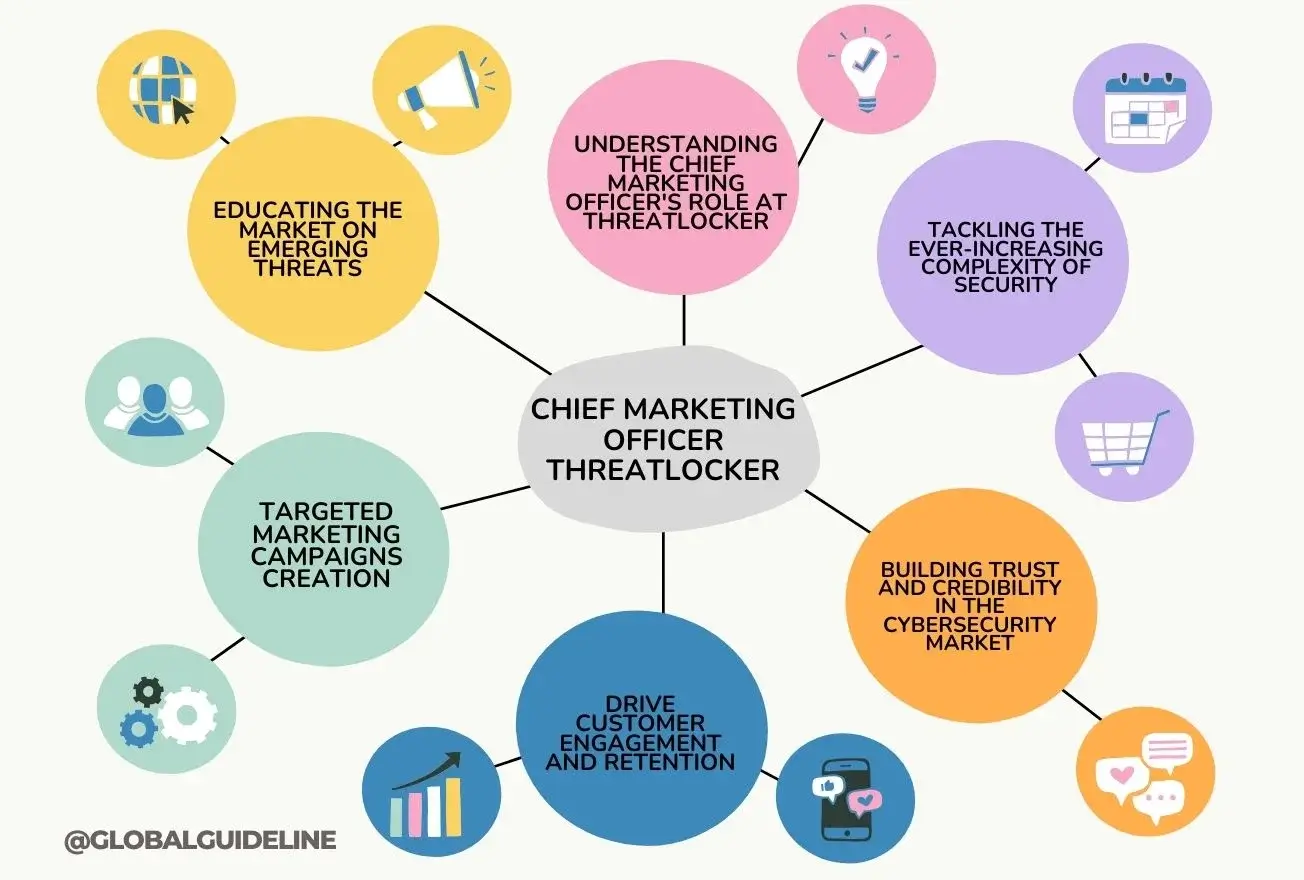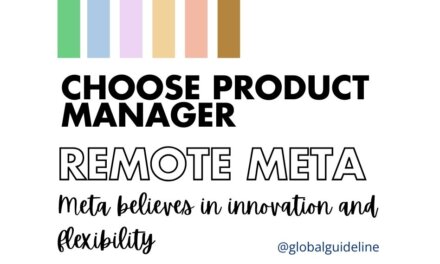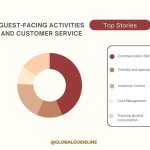In this ever-pressing digital world today, cybersecurity remains among the top agendas of all organizations. As cyber threats evolve with each new day, companies like ThreatLocker emerge to safeguard businesses from potential breaches. At the forefront of this effort, the Chief Marketing Officer ThreatLocker plays a crucial role in addressing the most pressing challenges within the cybersecurity landscape. This article explores how the Chief Marketing Officer (CMO) at ThreatLocker tackles three significant business problems facing organizations today.
Table of Contents

Understanding the Chief Marketing Officer’s Role at ThreatLocker
The first step, before explaining what particular problems have been dealt with by the CMO at ThreatLocker, is to understand what value this executive function brings in for the company.
What is the role of the Chief Marketing Officer within a company?
The CMO shall lead the development and execution of marketing strategies that fit into overall company goals. This includes brand positioning, product promotion, customer engagement, driving revenue growth, and whatever else is needed to ensure business success. In ThreatLocker, the role of CMO is way beyond traditional marketing, where a professional needs to be in a position to think through various specific challenges of an ever-changing cybersecurity landscape.
What would be defined as the strategic role of the CMO? The strategic role for the CMO is to understand the cybersecurity market, find what is emerging, and create messaging that resonates with a technical audience and business leadership. For this, deep knowledge of the various ThreatLocker products and services is required, plus the broad industry context the company operates within.
Who does the CMO report to? Traditionally, this role is a direct report to the CEO, meaning this role is one of the most senior within the business. In ThreatLocker, the CMO works hand in glove with the CEO, Danny Jenkins, to have the marketing objectives of the company aligned with its business goals.
1. Tackling the Ever-Increasing Complexity of Security
One of the biggest challenges in the cybersecurity industry today is the level of sophistication threats are now taking on. As companies are adopting new technologies and continuing to expand their digital footprint, the attack surface for cybercriminals grows simultaneously. The CMO of ThreatLocker not only conveys what keeps customers up at night but how the company’s solutions meet these complexities.
Simplifying Complex Cybersecurity Concepts
For most companies, cybersecurity is somewhat daunting. This role would also apply to any company without particular in-house expertise. Now, as the Chief Marketing Officer ThreatLocker, the CMO assumes responsibility for taking a very complex topic in cybersecurity and making the concepts understandable to the masses-in other words, providing clear, concise messaging of the benefits of ThreatLocker’s solutions, such as endpoint security, application allowlisting, and ringfencing.
The ThreatLocker blog plays a major role in this process. It serves as a vital channel for providing insight and well-informative content, educating businesses about the importance of cybersecurity and how ThreatLocker’s tools can serve to protect them.
These are some of the major features that a CMO needs to highlight to potential customers, such as ThreatLocker exclusions and ThreatLocker firewall. The CMO should ensure that ThreatLocker exclusion and ThreatLocker firewalls, for example, are articulated in a manner that reflects their worth in enhancing the security posture at a company.
Educating the Market on Emerging Threats
The cybersecurity threat environment hardly retains the same face from one day to the next. With this ever-evolving nature of threats, the CMO would be tasked with enlightening the market about these emerging threats and how solutions by ThreatLocker are designed to counter such newly emerging threats. This will include leveraging the CMMC compliance tool developed by ThreatLocker in the service of companies working with the U.S. Department of Defense, among other regulated industries.
Working at ThreatLocker means joining a team dedicated to innovative cybersecurity solutions. The CMO will ensure that the Company’s messaging is innovative and well ahead of the threat landscape.
2. Building Trust and Credibility in the Cybersecurity Market
In as sensitive an area as cybersecurity, trust and credibility are key. Businesses must be extremely sure that the solutions they choose will be effective and reliable. ThreatLocker’s Chief Marketing Officer is deeply involved with establishing this trust and reputation of the company as an industry leader.
Creating a Strong Brand Identity
Credibly, strong brand identity is the bedrock upon which any company desirous of dominating the market should rest. At ThreatLocker, this entails building a brand synonymous with security, dependability, and innovation. The CMO at ThreatLocker will champion this through consistency in messaging, consistency in visual design, and consistency in customer experience.
ThreatLocker images and all other visual elements are used in the placement of brand identity across the company website, social media channels, and marketing materials.
Business valuations for ThreatLocker can be related to the perceptions of its brand. In this case, a strong brand would relate to higher valuations as a sign of the ability of an organization to gain and retain customers in a more competitive environment.
Leverage Thought Leadership
Another key building block of trust and credibility is positioning ThreatLocker as a thought leader in the cybersecurity space. The CMO at ThreatLocker is very instrumental in ensuring that at ThreatLocker, the executives are front and center in the industry, discussing key topics.
Thought leadership articles, case studies, and whitepapers published through the ThreatLocker blog and other content platforms expose knowledge and dedication to developing cybersecurity best practices that have idealized the company.
Who is the CEO of ThreatLocker? Danny Jenkins is a well-known figure in the cybersecurity world. The CMO coordinates with him closely to make his thoughts and vision correctly tailored to the market for greater credibility of ThreatLocker.
3. Drive Customer Engagement and Retention
Obviously, it’s all about customer acquisition and retention for any company, and similarly for ThreatLocker. The Chief Marketing Officer ThreatLocker creates strategies to gain new customers and retain existing customers in engaged, satisfied ways with the product.
Targeted Marketing Campaigns Creation
With properly targeted marketing campaigns, the right audience is reached for conversions. The CMO develops ThreatLocker campaigns positioning the particular benefit of its solutions to the different market segments: MSPs, enterprise IT departments, and small businesses.
The salary of a ThreatLocker account manager depicts the seriousness of the company in relations with its customers. For instance, the CMO will align marketing activities with the sales strategy of the company in order to make it easier for the account managers to explain the value of the ThreatLocker solutions to their clients.
ThreatLocker exclusions are one of its kinds of features. The same can be highlighted in marketing campaigns by showing that the solution provided by the company is more flexible and customized compared to competitors.
Improving Customer Experience
In fact, it can be that customer experience retention is essential for CMO ThreatLocker: be it an engaging journey for customers from the initial point of contact to the time when support and product updates are ongoing.
This might be a new feature introduction, enhancement of the user interface, or the rollout of a customer success program at ThreatLocker. The CMO will ensure that such initiatives are communicated properly, thus helping customers realize the value of continued investment in ThreatLocker’s solutions.
Ringfencing by Application allow-listing is one key feature that enhances the customer experience because it’s robust protection against unauthorized applications. This is where the job of the CMO comes in-to explain features such as these, and how those features work, as part of creating a safer IT environment.

Job Interview Questions for a CMO of a Cybersecurity Company
If you try to get hired as a Chief Marketing Officer in a cybersecurity firm such as ThreatLocker, here are some of the questions you may face in such a job interview:
- How do you keep yourself updated about recent trends and threats in cybersecurity?
- This question gauges how up-to-date one is with regard to in-depth changes going on in the industry and integrate into one’s marketing ideas.
- Give an example of a successful marketing campaign you have led in a technical field?
- Employers are eager to understand how you would be able to take that complex technical material and develop marketing messages that will drive them home with your target audience.
- How would you balance the need for brand consistency with the need to tailor messaging for different market segments?
- This question seeks to evaluate your ability to maintain a strong brand identity while effectively reaching diverse audiences.
- What would you do to build trust and credibility for a cybersecurity company?
- Trust is the foundation of cybersecurity, and this question outlines your strategy for creating and building it.
Frequently Asked Questions
1. Who is the CEO of ThreatLocker?
Danny Jenkins is the chief executive officer at ThreatLocker and has led the company in its commitment to offering cutting-edge cybersecurity solutions across the globe to businesses.
2. What is the role of a Chief Marketing Officer in an organization?
The CMO is responsible for the elaboration of proper implementation strategies concerning marketing, which suit the goals of the corporation, be those brand positioning, product promotion, or any other area within customer engagement.
3. What is the difference between a Chief Marketing Officer and a Head of Marketing?
Both bear responsibilities for marketing functions at one level or another, but the CMO is a slightly higher management position with broader strategic functions, including aligning with the general business objectives outlined by the corporation at large.
4. How does ThreatLocker forge trust in the cybersecurity market?
ThreatLocker creates trust through its relentless branding and thought leadership and since it speaks to the value and reliability of its cybersecurity solution.
5. What are some other key features underlying the solutions brought forth from ThreatLocker?
Some of the other key underlying features in ThreatLocker’s solution suite include endpoint security, application allowlisting, ringfencing, compliance applications such as CMMC, all designed for sound protection from cyber threats.

Conclusion
The CMO at ThreatLocker holds the key to some of the major ills that have confronted companies in recent times in the cybersecurity world: from moving and over-simplifying the complex, to trust, customer engagement, and retention, this CMO role at ThreatLocker is conceived to impart value both to the company and its clients. In the ever-changing landscape of cybersecurity, these strategic efforts of the CMO will continue to anchor the leading position of ThreatLocker. Whether you may be interested in a career within cybersecurity marketing or how ThreatLocker’s approach can benefit your organization, their thoughts underpin the value of strategic marketing in fighting the terrors in today’s digital world.










